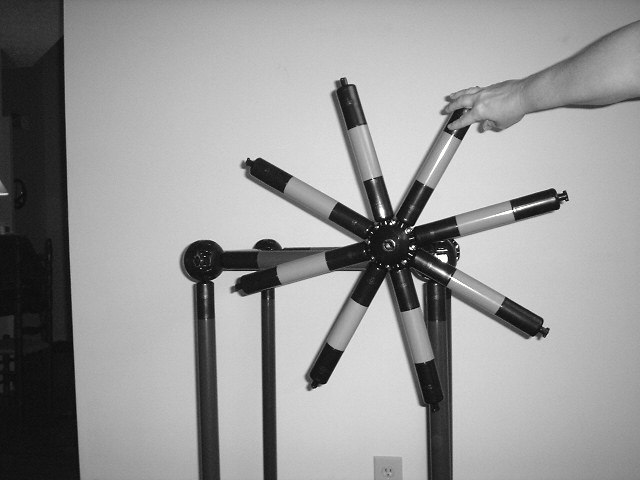Benefts and Barrier Wheel Setup
1. Build a square using the 11” tubes and four spheres. Place this on the ground.
2. Attach one 36” tube to each sphere so these tubes point vertically.
3. Connect one sphere to each open end of the 36” tubes, and then connect these with additional 11” tubes to form the three-dimensional base.
4. To create the fan, take one sphere and attach eight 16” tubes.
5. To attach the fan to the base, attach one 24” tube perpendicularly to the center sphere of the fan. Then place this 24” tube on the top right of the base and attach securely with twine (as pictured below).
6. Using eight small pieces of paper, write the word “Barrier” on half of the pieces and “Benefit” on the other half.
7. Attach these pieces of paper with masking tape to every other 11” “blade” of the fan, alternating labels on each tube.
Helpful Hints
This activity can be used with a group with diverse functioning levels as all can participate with prompts
The effectiveness of the group process will often determine the outcome for the participant. These are only suggested questions to begin the discussion. Select the ones you feel will best benefit your group. Make sure to let everyone share their ideas, and remind participants that everyone’s feelings are important!
Suggested questions for Processing:
